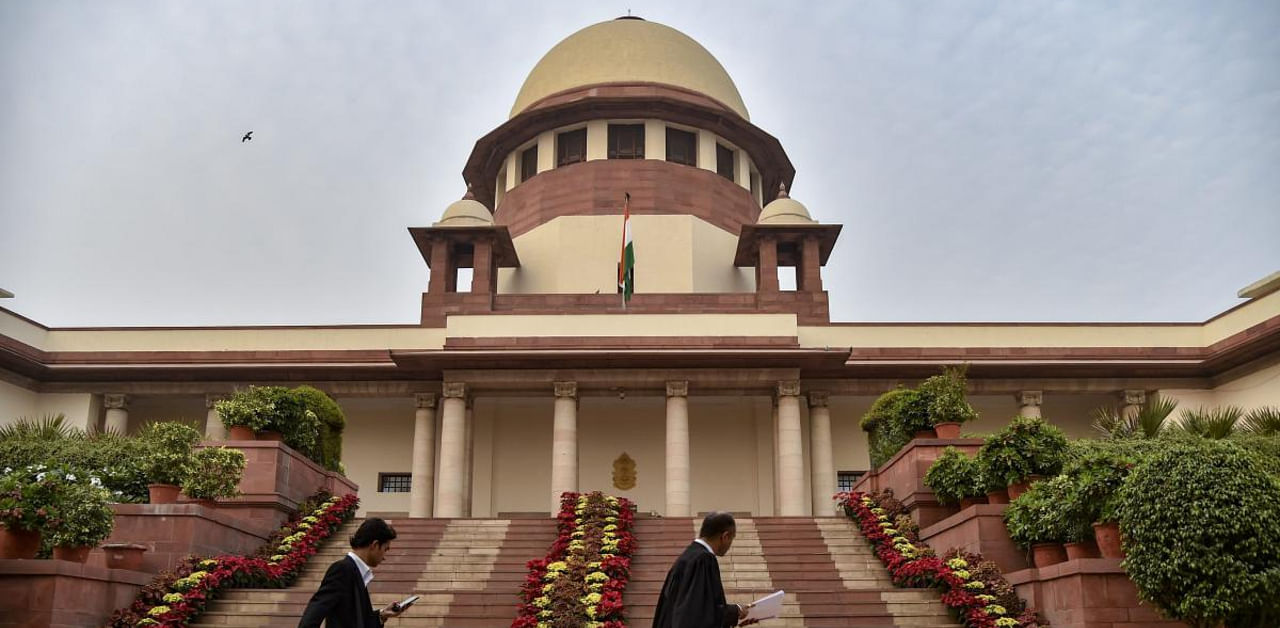
The recent conviction of lawyer and activist Prashant Bhushan for contempt of court has brought into focus not only the case itself, but the very law of contempt of court, too. To that extent, the case is a timely reminder of the friction that exists between individual freedoms, particularly freedom of speech as is guaranteed by Article 19(a) of the Constitution, in a modern democracy -- indeed, one touted as the world’s largest democracy -- and the law of contempt of court. To understand the issue in its entirety, one must have an understanding of what the contempt law states and the rationale for it; only then can one determine the merits of the law and its place in a modern liberal democracy.
There are two kinds of contempt of court -- civil and criminal. Civil contempt is when one willfully disobeys a court order or breaches an undertaking given to the court. Criminal contempt has been defined as the publication (whether by words, spoken or written, or by signs, or by visible representation, or otherwise) of any matter or the doing of any other act whatsoever which (i) Scandalises or tends to scandalise, or lowers or tends to lower the authority of, any court, or (ii) Prejudices, or interferes or tends to interfere with the due course of any judicial proceeding, or (iii) Interferes or tends to interfere with, or obstructs or tends to obstruct, the administration of justice in any other manner.
Its raison d’être flows from the clauses listed above. As Rajeev Dhawan wrote in his essay in the edited volume by K N Harikumar, ‘Courts, Legislatures, Media Freedom’, it serves the purposes of “(i) discipline inside courts (ii) compliance with court directions and orders (iii) exclusivity and integrity of the justice system and (iv) (maintaining) the prestige and reputation of the judges and the courts.”
It is as a result of the anachronism of the fourth of those purposes -- maintaining the prestige and reputation of the judges and the courts -- that Prashant Bhushan got into hot water with the court, and it is the first of the clauses of criminal contempt – scandalising the court -- under which he was convicted.
Many of the clauses of the contempt law are justified. However, the clause against scandalising the court, for the purpose of maintaining its prestige and reputation, has obvious problems. For one, both the clause and the purpose it serves are far too vague and all-encompassing. Furthermore, this portion of the law is out of sync with prevailing trends in society.
The contempt law has its origins in the common law of Victorian-era England and its raison d’être -- upholding the prestige and reputation of the court -- is steeped in Victorian mores. I would argue that the court’s prestige would go up, not down, immeasurably in the eyes of the common man were it to expose itself to critique, rather than resorting to convicting people for mean tweets. In the age of social media, the principles of free speech should be bolstered, and the courts should show restraint in exercising the contempt law.
The onus of maintaining the image and prestige of the courts (and of the judges) must lie primarily with the courts and judges themselves. However, because judges are also human, the only surest guarantee of being able to do so is for the courts and judges to keep themselves open and responsive to criticism. Who can argue that a judge sitting on judgement on his own ruling, instead of recusing himself, or a chief justice facing sexual harassment allegations sitting on the bench hearing that very case, add to the prestige of the courts? Indeed, it is mere common sense, and a fundamental principle of natural justice, that no one may be the judge in his or her own case. However, the contempt law enables just that as it stifles dissent and criticism and the judiciary sits in judgement on itself.
Finally, one must observe the tension between criminalising ‘scandalising the court’ and freedom of speech. Of course, freedom of speech in India is not absolute and is bound by reasonable restrictions. However, the keyword in that phrase is ‘reasonable’. Indeed, the Supreme Court, which has for long protected and expanded the ambit of free speech, seemed to give a nod to this standard even in the Prashant Bhushan case when it let him off with a nominal Re 1 fine.
One may take the United States and the United Kingdom as examples of liberal democracies in which there is no law at all on contempt of court involving scandalising the judiciary. In the United States, thanks to the First Amendment, freedom of speech is paramount, and the notion of contempt is limited to “behaviour carried out in the direct presence of the courts or so near thereto as to obstruct the administration of justice.” Courts in the US now limit contempt citations for criticism when necessary to avoid “clear and present danger”.
In the UK, contempt laws currently are restricted to: (i) Contempt "in the face of the court" (not to be taken literally; the judge does not need to see it, provided it took place within the court precincts or relates to a case currently before that court); (ii) Disobedience of a court order; and (iii) A breach of undertaking to the court. There is no clause on contempt for ‘scandalising the court’ or bringing down its reputation or prestige. India, too, would be well served, as an evolving liberal democracy, if the clause on scandalising the court is done away with in our contempt law.